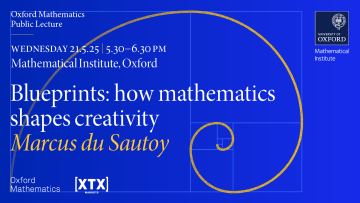13:30
q-deformations and (uniqueness of) string amplitudes
Abstract
q-deformations offer a systematic way to generalize familiar mathematical structures, revealing hidden symmetries and richer geometries that collapse back to classical frameworks as the deformation parameter goes to 1. Beyond their mathematical elegance, q-deformations have naturally emerged in diverse areas of theoretical physics, offering fresh perspectives on quantization, regularization, and non-commutative geometry. In this talk, we will explore how q-deformations intersect with the intriguing question of the uniqueness of string scattering amplitudes.
Junior Strings is a seminar series where DPhil students present topics of common interest that do not necessarily overlap with their own research area. This is primarily aimed at PhD students and post-docs but everyone is welcome.


